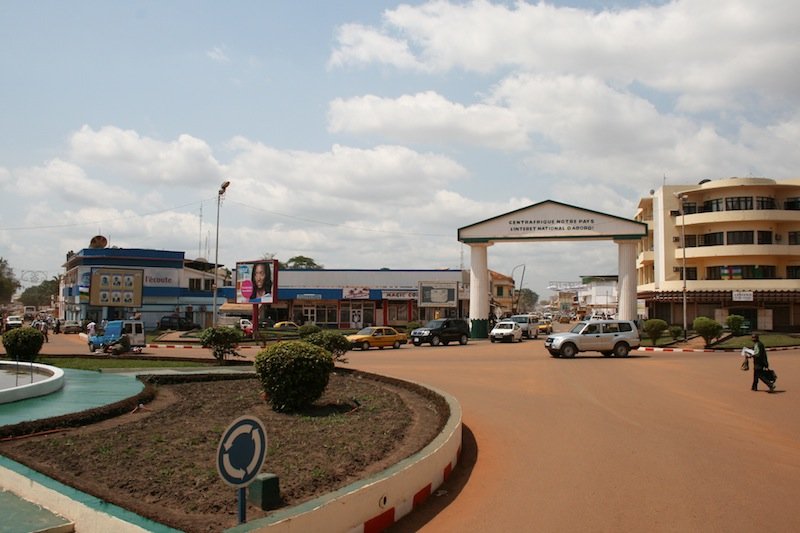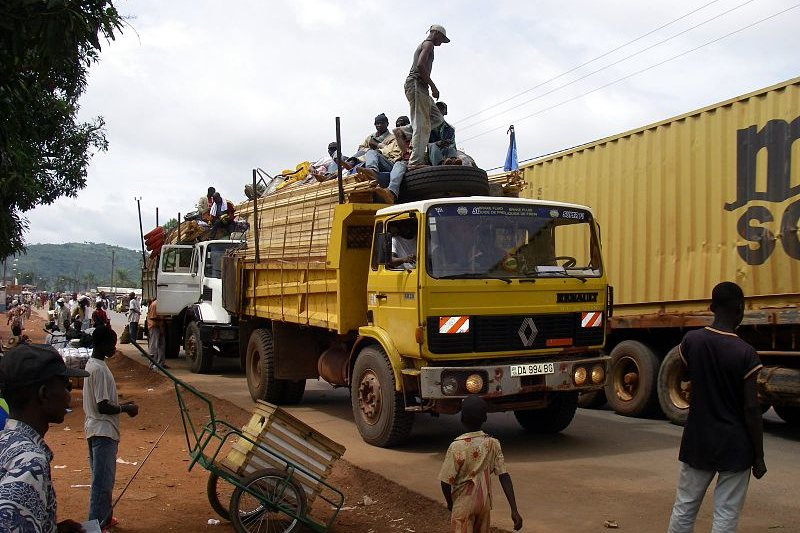
Bangui, Central African Republic
 Go Back - HOME | Latest Central African Republic > Africa > World | YouTube : Facebook | About Me : Contact Me
Go Back - HOME | Latest Central African Republic > Africa > World | YouTube : Facebook | About Me : Contact Me Bangui, Central African Republic
Bangui, Central African RepublicSource: https://commons.wikimedia.org/wiki/File:Bangui_Shopping_District.jpg
Author: Afrika Force

Bangui is the capital and largest city in the Central African Republic. The city is in the southwestern part of the country, on the north bank of the Ubangi River, a tributary of the Congo River. Across the Ubangi River is the Democratic Republic of the Congo, with the Congolese town of Zongo facing Bangui. The city covers 67 sq km (26 sq mi) and has a population of 623,000 people (2012 estimate).
Bangui was founded in 1889. At that time, the Central African Republic has not yet existed. The area was the French colony of Upper Ubangi (Haut-Oubangui). The colony was later renamed Oubangui-Chari and made part of French Equatorial Africa. Bangui derived its name from the river, which is known in French as the Oubangui.
The city of Bangui has been rocked by numerous political clashes and violence. These include the conflict that arose following the 1981 election, the soldier mutiny of 1996 and the coup of 2003. This has given Bangui one of the lowest quality of living ranking in the world, second only to Baghdad.
Visiting Bangui
The Bangui M'Poko International Airport (BGF) serves as the gateway to the Central African Republic. It receives flights from Addis Ababa, Casablanca, Cotonou, Douala, Libreville, Lomé, Nairobi, N'Djamena and Paris. Trucks in Bangui
Trucks in BanguiSource: https://commons.wikimedia.org/wiki/File:Central_African_Republic_-_Trucks_in_Bangui.jpg
Author: hdptcar

Places of Interest in Bangui
- Boganda Museum
- Bokassa Palace
- Cathédrale Notre-Dame
 Latest updates on Penang Travel Tips
Latest updates on Penang Travel Tips

Copyright © 2003-2025 Timothy Tye. All Rights Reserved.